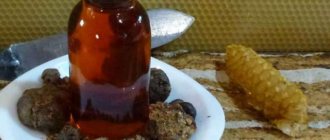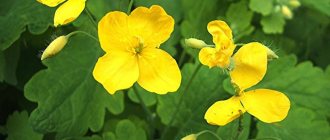Description of culture
Motherwort (Leonurus) is a plant from the Lamiaceae family. The motherwort genus is a perennial herbaceous plant.
What does it look like
The stem is straight, branched, pubescent, hollow, tetrahedral, up to 2 m high, reddish in color.
The leaves are opposite, petiolate. Their size decreases gradually towards the top of the stem. The lowermost leaves are 5-7 palmate, the subsequent ones are smaller: trifoliate, trifoliate, at the very top - simple, with two teeth.
Motherwort (Leonurus)
The flowers are small, two-lipped (diagnostic sign), pink-violet. In some species they are white and grow from the axils of the upper leaves. Flowering period: June-September.
The fruit looks like a cup with tetrahedral dark brown nuts.
The plant has many names that describe its appearance, medicinal benefits - woolly motherwort, hairy motherwort, hairy motherwort, dog nettle, heartweed, chicken trail, wild nettle, dead nettle, heart grass.
Where does it grow
It grows massively in the Middle East, central Asia, most of Russia, Ukraine, and Belarus. Cultivated as a medicinal herb in many countries.
In the wild, it grows, confirming its name, along roads, on the slopes of ravines, in abandoned summer cottages and gardens.
Cooking recipes
Motherwort is included in the list of raw materials that are in demand in folk medicine, allowing the treatment of many diseases. It is important to consult with your physician to ensure that you receive the expected benefits.
Motherwort (herb)
Grind dry heart grass. Transfer 3 tbsp. l. raw materials into an enamel saucepan with 200 ml of boiling water. Cook for a minute, remove from the stove and cover with a towel.
After an hour, the broth is filtered. Drink before meals (a quarter of an hour before) a tablespoon four times a day. Helps with stomach diseases.
Motherwort (flowers)
For nervous exhaustion, you should brew 2 dessert spoons of dried dog nettle flowers with boiling water - 400 ml. This is followed by heating for 20 minutes using a water bath.
Leave for half an hour under a napkin and filter. The decoction should be consumed 50 ml before breakfast, lunch, dinner and in the evening before bed.
Motherwort + valerian
To enhance the therapeutic effect at home in order to improve cerebral circulation, relieve nervous disorders, treat arrhythmia, and treat insomnia, combine motherwort and valerian herbs in equal parts with hawthorn berries. The raw materials are taken in dried form and crushed using a mortar.
Article for you:
Calendula decoction: recipe, what it helps with, how to take it, health benefits and harms
Dial 2 tbsp. l. medicinal powder, steamed in 500 ml of boiling water. Boil for one minute and then leave under a towel for half an hour and filter. It is recommended to drink a glass in the morning and evening.
Varieties and varieties
Stevia herb: description, properties and application
The genus motherwort consists of 24 species. In Chinese alternative medicine, some plant varieties are popularized as medicinal, while in European countries, traditional medicine uses completely different ones.
The following species are cultivated in Russia:
- Blue motherwort is a low, gray bush with dense pubescence with hairs pressed to the bottom. The flowers are light pink.
- Motherwort Tatarian has a long edge along the top of the shoots. The leaves are thin, dissected, the flowers are purple-pink.
- Common motherwort (motherwort cordial) is covered with long protruding hairs, the height of the shoots is up to 2 m. The size of the leaves from below to the top gradually decreases, the flowers are pink.
- Motherwort five-lobed (woolly motherwort) differs from the previous one in that the leaves at the bottom and in the middle of the shoots are five-lobed, while the upper leaves are three-lobed. The stem is covered with long protruding hairs, the pubescence is increased.
Blue motherwort
In total, 15 types of herbs have been thoroughly studied, and the pharmacopoeia allows the following to be used:
- cardiac (Leonurus cardiaca);
- five-lobed (Leonurus quinquelobatus).
Strengthening the immune system
Due to the immunostimulating properties of the plant, tincture from it is recommended as a means to support the body's defenses. For these purposes, the dosage is 30 drops once a day (during epidemics of colds, the number of doses increases to 2 times a day).
Contraindications
Before taking motherwort tincture, consider not only the benefits, but also the harms of the medicine. Because leonurine causes uterine contractions, the use of any herbal remedy is not recommended for pregnant women.
Contraindications include taking blood clotting medications (the herb thins the blood); harm is possible when using the tincture by people suffering from blood clotting disorders. The use of the plant is not recommended for children under 12 years of age and nursing women.
Features of growth
Euphorbia grass: description, properties, how to deal with the weed
Both species grow around abandoned ruins. Motherwort grows scatteredly, in wastelands and fallow lands. Five-legged grows in groups among overgrown bushes, on forest edges, forest belts, and meadows.
Note! Both species are successfully cultivated in Russia. Since the bush is perennial, they try to grow it in one place for 3-4 years. They are planted on personal plots and in farms that specialize in growing medicinal plants.
They thrive on nitrogenous, sandy-clayey soils due to their branched roots. Plants are resistant to soil drying out and are not picky about its composition.
How does it reproduce
Common juniper: description, properties and application
All types of motherwort reproduce by seeds. To improve germination, they are subjected to stratification for 60 days. A simplified option is winter sowing.
Also, seeds can first be sown for seedlings, and then the germinated bushes can be sent into open ground to a permanent place. Planting pattern 40x40 cm.
All types of motherwort reproduce by seeds
Important! The emerged seedlings are thinned out so that there are 4-6 bushes per 1 m row.
Further care of the sprouts consists of weed control. Water only during prolonged drought. Be sure to loosen the soil, taking care not to damage the roots. During the growing season they are fed with liquid mineral fertilizers.
When grown, motherwort is not susceptible to diseases and pests. However, for prevention, you can plant phytoncidal plants next to it, for example, garlic, if there is a massive invasion of leafhoppers, mites, cutworms, aphids, and also to protect against spotting and powdery mildew.
Properties of motherwort
Motherwort grass is an excellent honey plant with a long flowering period. The honey turns out transparent, sweet, weighty, and straw-colored. Beekeepers prefer motherwort varieties with pointed, elongated inflorescences.
For your information! Triangular fruit nuts, containing 30% oil, have found their demand in the paint and varnish industry.
Motherwort grass is an excellent honey plant
In the USA, motherwort is successfully replaced by valerian, which has similar properties. Its action is versatile and much stronger. Unlike valerian, motherwort raw materials are easier to prepare. You can even harvest several harvests, because the grass will grow back, but the dug up valerian root will not.
The healing properties of motherwort
The collected medicinal herbs contain ascorbic acid, essential oils, saponins, flavonoids, alkaloids, tannins, and a number of other biologically active substances.
This plant is widely used in the treatment of:
- myocarditis;
- tachycardia;
- cardiosclerosis;
- angina pectoris;
- ischemic disease;
- heart failure.
For your information! The herb is brewed and drunk to reduce hypertension, glucose levels, and cholesterol in the blood. It has a pronounced anticonvulsant and antispasmodic effect.
The herb is brewed and drunk to reduce blood pressure in hypertension
The benefits of using motherwort in the treatment of diseases of the digestive system have been proven:
- gastritis;
- flatulence;
- spasms;
- colitis
It also has an anti-inflammatory and expectorant effect. For the treatment of neurological diseases, its sedative effect will come to the rescue. The herb will help patients with epilepsy to relieve congestive cough.
Motherwort can be found in pharmacies in different forms:
- motherwort tincture;
- motherwort forte tablets;
- motherwort extract in tablets;
- phytosedan;
- motherwort herb mixture;
- calming collection No. 2.
Treatment recipes
Traditional recipes based on the inclusion of dog nettle as a dominant component are popular due to their high effectiveness.
Decoctions of mint + motherwort + hawthorn for cardiac arrhythmia
To relieve an attack of arrhythmia, different variations of healing home remedies are used.
- They combine several varieties of herbs - motherwort, mint, adonis, cudweed. Add foliage of coltsfoot, blackberry, and tartar. You will also need the roots of Leuzea, burdock, red rowan berries and apple peels.
The raw materials must be dried and crushed. The components are taken in equal proportions. Spread 1 tbsp. l. prepared collection in a bowl with 300 ml of boiled water. Simmer for 10 minutes, placing the container in a water bath. The cooled drink is placed on cheesecloth. Drink 50 ml slightly warmed every 6 hours.
- Dog nettle, combined with the fruits of hawthorn and rose hips in equal volumes, works effectively. Spread 1 tbsp in the evening. l. prepared crushed mixture into an enamel ladle with 0.5 liters of water.
Cook for a minute after boiling and set aside. Keep covered until morning. Drink 150 ml of the filtered healing liquid before breakfast, lunch, and dinner.
For insomnia
To cope with insomnia or neuroses, take dried crushed heart herb - 15 g. Steam with boiling water - 200 ml. Leave for 10 minutes, and then boil the mixture for 5 minutes.
Leave the broth until it cools. When strained, drink 1 tbsp. l. before breakfast, lunch, dinner and at night. If desired, add a little honey.
For allergies
It is recommended to use motherwort to get rid of allergies that occur to cats. To prepare a decoction, you will need the aerial part of the plant ground into powder. Fill it completely with water.
After boiling for a minute, keep it covered for two hours. It is recommended to rinse your nose with filtered liquid every 6 hours, as well as gargle.
For burns, wounds
Pour 300 ml of water into an enamel bowl. Place dried dog nettle in it - 2 tbsp. l. Boil at low temperature for 5 minutes.
Article for you:
Parsley decoction: benefits and harms, use in folk medicine and cosmetology
Leave under a napkin to infuse for 15 minutes, after which the composition is strained. Then the liquid is cooled. Apply lotions to the affected areas several times a day.
Contraindications for use
Motherwort can cause allergies in people prone to it. Phytophthora, which the plant contains, should not be taken if you have an individual intolerance to the herb.
Motherwort can cause allergies
Note! Due to its stimulating effect on smooth muscles, it should not be used by pregnant women, as well as by people with a history of stomach ulcers, erosive gastritis or low blood pressure.
Since motherwort preparations cause drowsiness, the instructions for their use indicate that after use there may be a decrease in concentration. Do not give to children under 10 years of age.
Calming the nervous system
How to take motherwort tincture for calm? A one-time dose in a stressful situation is a mistake. For normal functioning of the nervous system, a course of use (1 month) is recommended. Despite the improvement, take the tincture 35 drops 3 times a day before meals. Important! The last dose should take place before bedtime.
Motherwort grass: when to collect and how to dry
Raw materials are harvested from the second year of growth in the summer, when the grass blooms. The upper parts of the stems and side shoots should be cut off to a thickness of no more than 0.5 cm and a length of 40 cm. Next, they need to be dried in the shade or in a well-ventilated area. You can dry it in another way by tying the stems into bunches and hanging them from the ceiling. You can also use an electric dryer, which dries the raw materials faster.
Important! Dry grass is stored for about 3 years.
Having learned everything about the motherwort herb - what it looks like, about its medicinal properties and where it is used - any gardener will be able to prepare herbal raw materials for the treatment of certain ailments. But the main thing here is not to overdo it and always consult a doctor!











